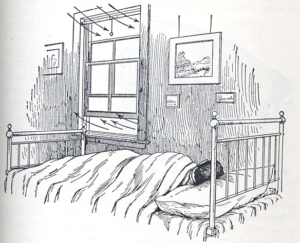In past times, prior to the energy crises of the early 70s, wood-framed residential buildings were not considered to be complicated things at all. Construction workers, whether paid trade-people or family members working evening and weekends to build their own home, had a reasonably good idea of what was expected from the finished project. Inhabitants were to be kept dry, have opening windows for good ventilation, the structure was intended to last with little maintenance and heating costs were to be affordable. High schools of the day all tended to influence students towards such values. The house and apartment designers and builders of those times before the early 70s, had in fact been urged to believe that bedroom windows must be left open at night to eliminate stale air containing exhaled carbon dioxide. Such notions of the need for fresh air are especially evident within the general science school textbooks of the 1930s along into 1960s. Textbooks that were influential in forming the values of young people who were to become the adult designers and builders of the 70s. The interesting example below is from a textbook authorized for use in the provinces of British Columbia and Alberta during the 1940s and 50s. 
The textbook points out that “stuffy rooms are unhealthful”, and continues to explain that “your home should have a constant supply of fresh air” (Limpus & Shore 1936, pg. 105). The wonderful illustration of the high school person in bed, with the air wafting in through the bottom of the double hung window and out at the top, almost makes one feel the chills. However, what it does clearly identify, are the early influences that were at work in forming the attitudes of the designers and builders of the prior to energy crises days.